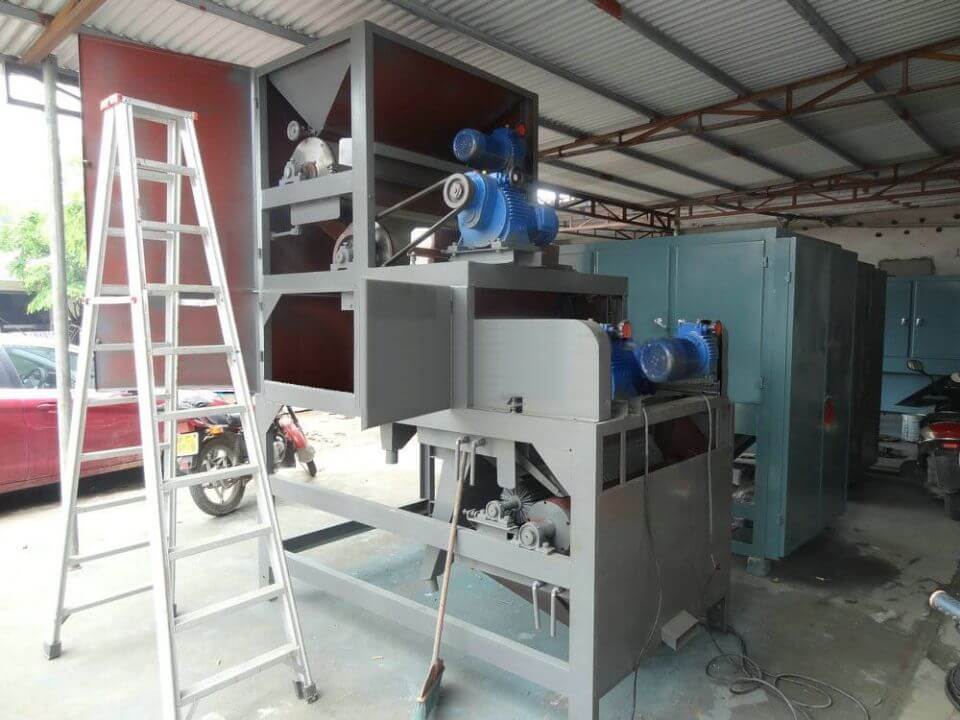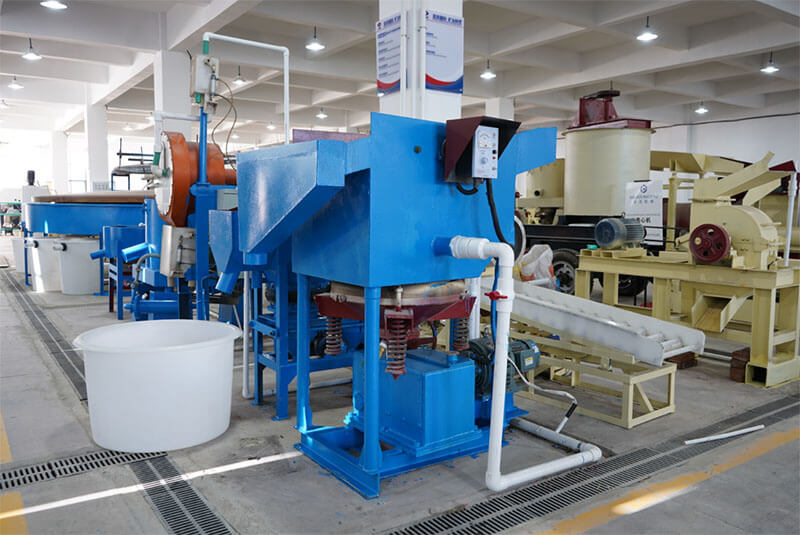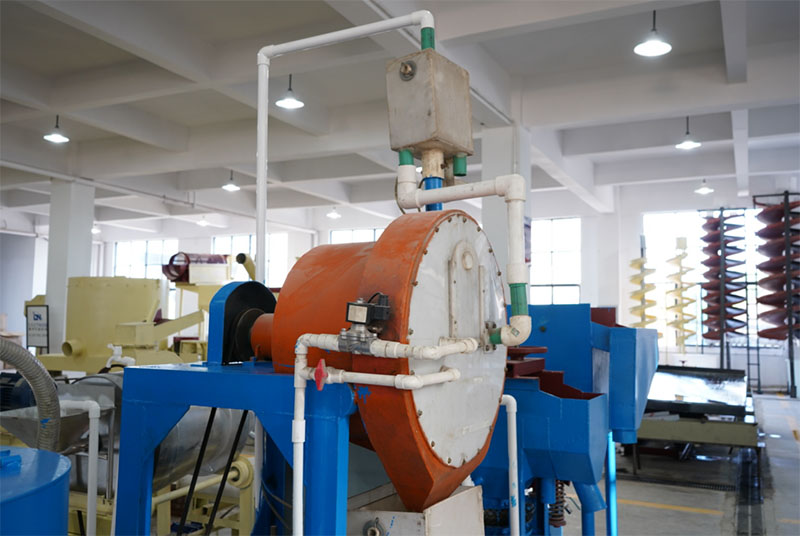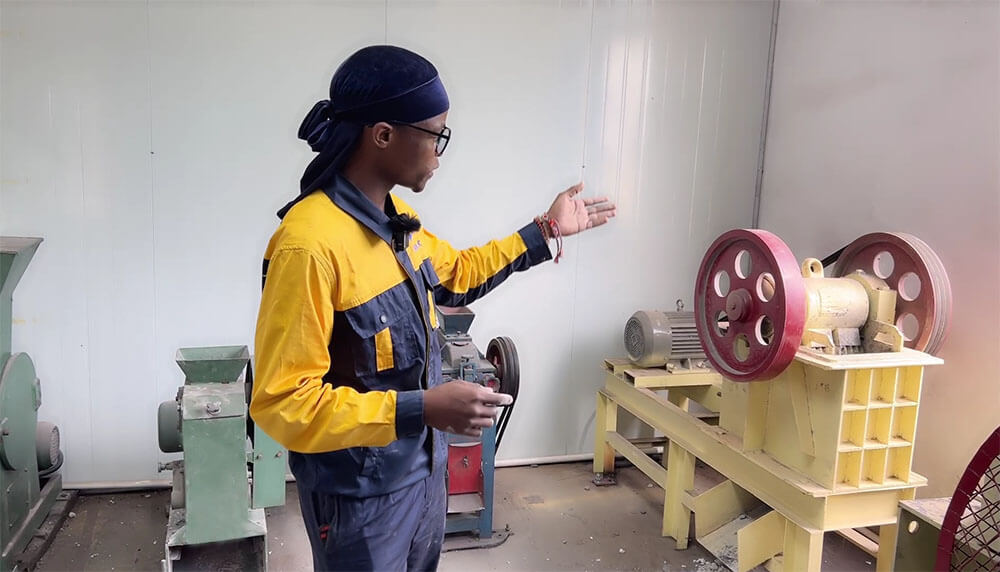The lab cone ball mill is a lab grinding equipment for sample ore testing experiments. The XMQ series lab cone ball mill is widely used for mineral fine-grinding and laboratory analysis of metallurgical, geological, coal chemical, building materials, and other departments. It is also a device equipped with flotation machines, gravity separation equipment, and other machines. It is popular among relevant department staff for its compact size, convenient operation, and high work efficiency.
Lab cone ball mill working principle
- The XMQ cone ball mill is a horizontal cylindrical rotating device. It is driven by external gears, with two compartments and a grid-type ball mill. The materials are uniformly fed into the mill chamber through the feeding device through the feeding hollow shaft screw.
- There are lining plates in the chamber. And inside the ball mill was filled with steel balls of different specifications. The rotation of the cylinder generates centrifugal force to bring the steel balls to a certain height and then drop them, producing a heavy impact and grinding effect on the materials.
- After the material reaches rough grinding in the warehouse, it enters the second warehouse through a single-layer partition board. The warehouse is embedded with a flat lining board and steel balls inside the machine to grind the material. The powdered material is discharged through the discharge grate to complete the grinding operation.
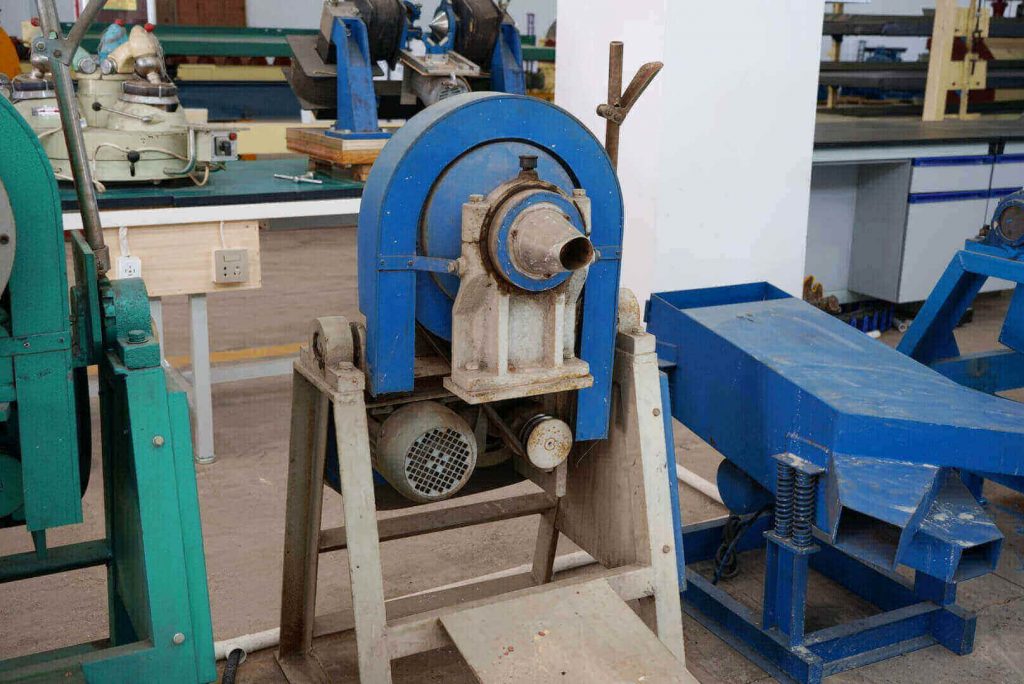
Technical Parameters
- The models of this series of conical ball mills include XMQ Φ 150 × 50, XMQ Φ 240 × 90, and XMQ Φ 350 × 160, with feed amount of 200g, 500-1000g, and 4000g respectively.
- The feed particle size is under 3mm, and the discharge particle size is under 0.074mm.
- The motor power is 0.25kw, 0.75kw, and 1.1kw, with an external dimension of 580 × 620 × 1180mm and weights of 150kg, 170kg, and 300kg, respectively.
Installation And Operation
- Power supply: 380V
- Foundation: Fix the bracket feet to the cement base with expansion screws.
- Trial rotation: It is normal if the rotation direction is consistent with the mark.
Operation
- The steel balls are well-proportioned before leaving the factory, and users cannot change them freely.
- First, wash the steel ball and cylinder wall by idling.
- Before adding materials, grip the handle tightly to rotate the cylinder and frame 90 degrees, with the feeding port facing upwards. Release the lock position of the handle and use a wrench to open the feeding port. Then, add water, ore, and chemicals to the feeding port in sequence and cover it tightly. After releasing the handle and rotating it 90 °, lock it and work according to the predetermined time.
- When picking up materials, wait for the motor to stop running, place the receiving basin, open the discharge port with a wrench, release the positioning with the handle, and rotate the discharge port of the cylinder downwards by 90 degrees to overflow the slurry.
Key points for installation and operation
1. Installation: The machine does not require a separate foundation. It just requires installing four expansion screws on the bracket feet and connecting the power and ground wires. Then check the rotation direction, and clean the grinding wall and steel rod until they are clean.
2. Use: Turn on the lab cone ball mill and let it run empty. After removing the rust on the steel rod and cylinder wall, stop the machine, pour anti-rust lime water, and rinse the steel rod and cylinder wall. Add water, ore, and chemicals in sequence, close the feeding cover, place the cylinder on a horizontal surface, and then start grinding. After grinding to the specified time, stop, release the discharge port, open the feed port, place the receiving basin in place, grip the handle with your hand to remove the pin from the positioning groove, use force to rotate the discharge port of the grinding cylinder downwards, pour the slurry into the basin, and wash the steel rod and cylinder wall before proceeding to the next operation.
3. After use, add the rust-proof lime water to the grinding cylinder, close the cover, place the cylinder and the entire machine in a horizontal platform, and cut off the power until the next time use.
Daily Maintenance
1. Clean the machine after use.
2. We should add lime water to the cylinder when the equipment is available.
3. Add an appropriate amount of grease to the oil cup of the front bearing seat before use.
4. Regularly check the power supply voltage and grounding to ensure good working conditions.
Lab cone ball mill characteristics
- Electrical control of the tilting feeding and discharging of the cylinder, which is convenient and fast, and the tilting angle adjustable.
- Fine grinding materials have low unit power consumption and high abrasive efficiency.
- Feeding and discharging, automatic control of the cylinder body, no need for manual operation, to avoid labor damage.
- Users can set the machine-running time, with a user-friendly design.
- Installation does not require a dedicated foundation, making it easy to move and maintain.
- The particle size composition of finely ground materials is uniform, and the degree of over-crushing is small, which is conducive to improving the quality of ore selectivity experiments.
JXSC lab mineral processing equipment manufacturer has more than 38 years of experience in mining processing. We provide various lab mining equipment including gravity-separating equipment for processing minerals such as gold, tin, tungsten, lead, zinc, tantalum, niobium, iron, manganese, silver, titanium-iron, etc. Lab machines include laboratory jaw crusher, hammer crusher, roller crusher, grinding equipment, lab gravity separator, screening, washing equipment, etc. Welcome to consult!

